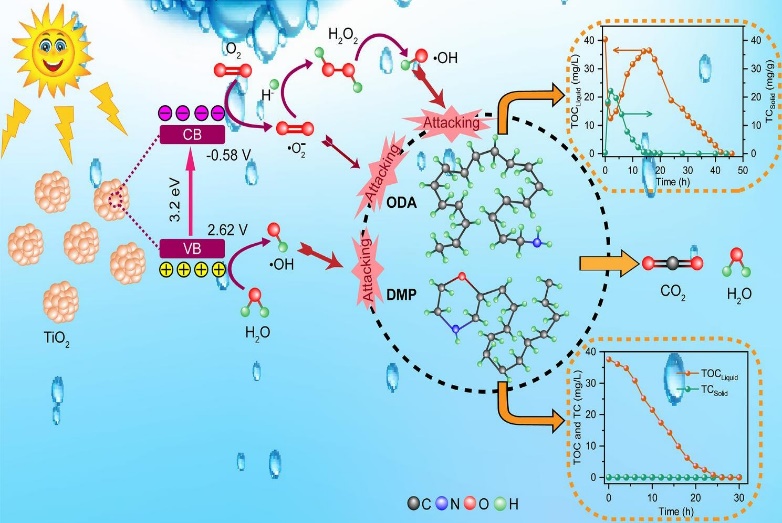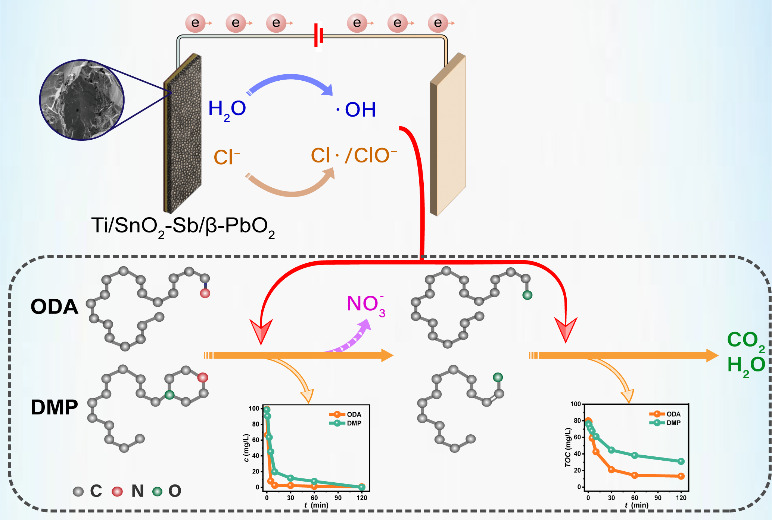As the global population has explosively increased, agricultural yields need to be substantially increased. Increased worldwide demand for food, animal feed, and fiber led to a speedy growth in potash fertilizer usage. There is no commercially feasible substitute, making potash fertilizer an essential supply of potassium for agriculture. In the forward and reverse froth flotation procedures, octadecylamine (ODA) and 4-dodecylmorpholine (DMP) are the two most often used flotation collectors, respectively. ODA and DMP are organic flotation agents with stable chemical properties and are more difficult to degrade under natural conditions, therefore, they are easy to accumulate in natural water. Specially, ODA poses the risk of damage to the eyes and can also irritate the skin and mucosa, causing moderate inflammation. DMP is a second class contaminant since it is a surfactant and also a carcinogen. After potassium extraction, the flotation agents and effluent are discharged into nature’s water. Especially nowadays, due to the substantial rise in potash fertilizer production worldwide, the problem has become even more intense. However, to the best of our knowledge, there is little comprehensive research on the degradation of ODA and DMP.
A research group from Qinghai Institute of Salt Lakes, CAS, led by Xiushen Ye carried out experimental studies on the degradation of organic flotation agents (ODA and DMP) from both photocatalysis and electrocatalysis, prepared a series of photo- and electrocatalytic materials, examined the degradation activity and stability of electrode materials on ODA and DMP, explored the photocatalytic and electrocatalytic degradation mechanism, and deduced the possible degradation paths of ODA and DMP. It was found that the organic flotation agents in solution were completely degraded by degrading ODA and DMP in the highly saline wastewaters, and the TOC value and product toxicity were greatly reduced. These work sheds light on the rational design and fabrication of highly efficient photocatalysts and electrocatalysts for the degradation of flotation agents in potash fertilizer production.
The above studies provide theoretical and practical references for the research of handling organic flotation agents and the high value utilization of salt lakes. Relevant work has been published in journals such as Chemical Engineering Journal and Separation and Purification Technology.

Fig. 1. Photocatalytic degradation of potassium flotation chemicals by anatase TiO2

Fig. 2. Electrocatalytic degradation of potassium flotation chemicals by Ti/SnO2-Sb/β-PbO2 anode
Citation:
[1] L. Ma, M. Lu, K.X. Li, S.Y. Zhang, H.N. Liu, Y.F. Huang, Z. Xing, Z.J. Wu, X.S. Ye, Photocatalytic degradation of octadecylamine and 4-dodecylmorpholine over titanium based photocatalyst: Activity and mechanism insights, Chem. Eng. J., 472 (2023) 16. http://dx.doi.org/10.1016/j.cej.2023.144782
[2] M. Lu, S. Zhang, Z. Song, L. Ma, H. Liu, M. Fang, H. Zhang, X. Ye, Z. Wu, Electrocatalytic degradation of octadecylamine and 4-dodecylmorpholine by the Ti/SnO2-Sb/β-PbO2 anode at high salinity conditions: Activity and mechanism insights, Sep. Purif. Technol., 330 (2024) 125271. http://dx.doi.org/https://doi.org/10.1016/j.seppur.2023.125271
